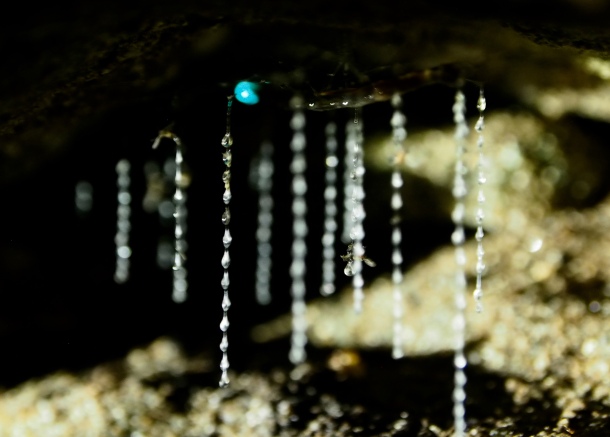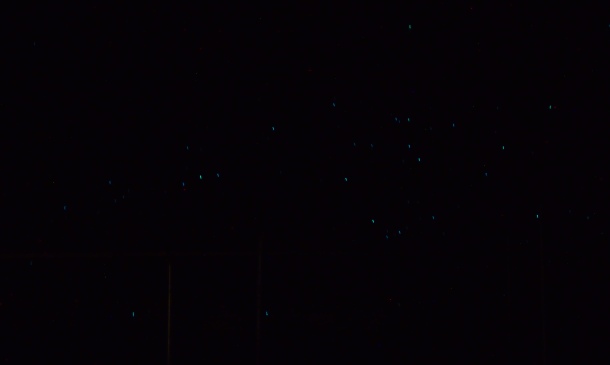The breathtaking beauty of a star-studded sky is enchanting beyond words. Unfortunately, the best places for stargazing are remote locations far from illuminated cities. That didn’t stop me from trying to recreate a star-lit sky as a child – the ceiling of my suburban bedroom was covered in goofy glow-in-the-dark stars.
But stars aren’t the only source of a twinkling glow in the dead of night. Bioluminescent organisms and fluorescent minerals are abundant in nature, from marine invertebrates (firefly squid Watasenia scintillans, bobtail squid Aliivibrio fischeri, moon jellies Aurelia), fungi (Mycena chlorophos), insects (fire flies Lampyridae), bacteria (Vibrio harveyi), to fluorescent rocks (aragonite, calcite). Studio Ghibli films have long captured our fascination with such awe-inspiring luminescent phenomenon:



Many insects, gastropods, and arthropods, such as midges, mayflies, caddisflies, mosquitos, and moths are also attracted to twinkling glows, albeit for different reasons. In some cases, this attraction has turned out to be a fatal one – their predators, glow worm larvae of the Arachnocampo genus, have evolved bioluminescent tails to lure them towards sticky dew drop traps known as snare.

Arachnocampa richardsae larvae and its prey caught in a deadly trap

Twinkling glow of Arachnocampa richardsae
I visited a glow worm inhabited overhang in Mount Tomah late last year and observed Arachnocampa richardsae up close. The guide explained the ecology and bioluminescent mechanism of the glow worm with great enthusiasm.
Glow worms are the larvae of fungus gnats and there are only a few species found in Australia, most notable of which are Arachnocampa flava in Queensland, Arachnocampa richardsae in New South Wales, and Arachnocampa tasmaniensis in Tasmania. The egg stage lasts 7 to 9 days, while the larvae stage accounts for the longest period in its lifecycle, ranging from 5 to 12 months. The pupal stage lasts for 6 to 7 days and the adult stage only lasts 2 to 3 days for females and 4 to 6 days for males.
Glow worm habitats are typically densely populated because the collective glow enhances attraction to prey. Despite this, they are solitary and extremely territorial. Cannibalism is noted as one of the main causes of mortality, along with entomogenous fungi, desiccation, flooding, and predators such as harvestmen arachnids or cave daddy-long-legs (Pugsley, 1983).
Climatic conditions and food supply are the most important environmental factors for glow worm survival. They require high relative humidity (>80%) and warm temperatures (~23 degrees). The sticky mucus droplets on the snare help adhere prey securely, but evaporate when relative humidity falls below 80%. Their nests are strategically situated near creeks and streams because their diet comprises mainly of insects that emerge from nearby water bodies.
The light emitted by its tail is the result of a chemical reaction between a chemical waste product (luciferin), an enzyme (luciferase), an energy source (adenosine triphosphate or ATP), and oxygen. The blue-green light emitted from its tail lures prey and becomes dull after the glow worm has fed. While Arachnocampo require ATP to complete the bioluminescent reaction, other organisms require calcium (moon jellies Aurelia).
Luciferase has also been exploited in laboratories to enhance our understanding of gene expression at the transcriptional level and the level of cellular ATP activity level: the Luciferase Reporter Gene Assay (Smale, 2010).
-end-